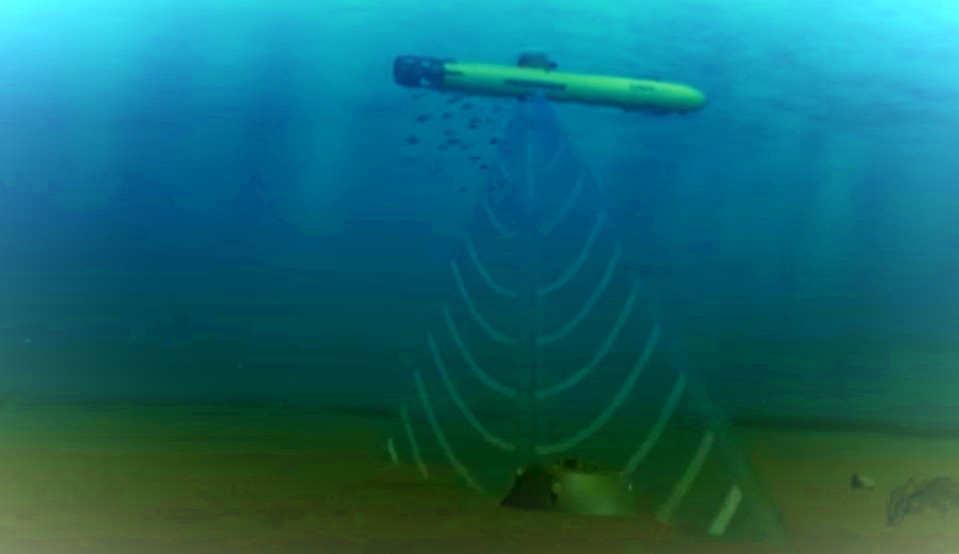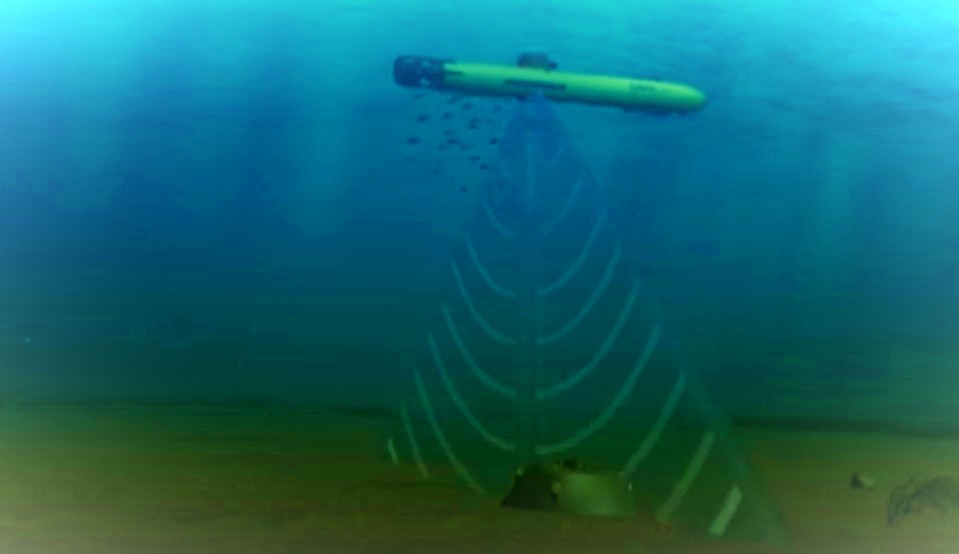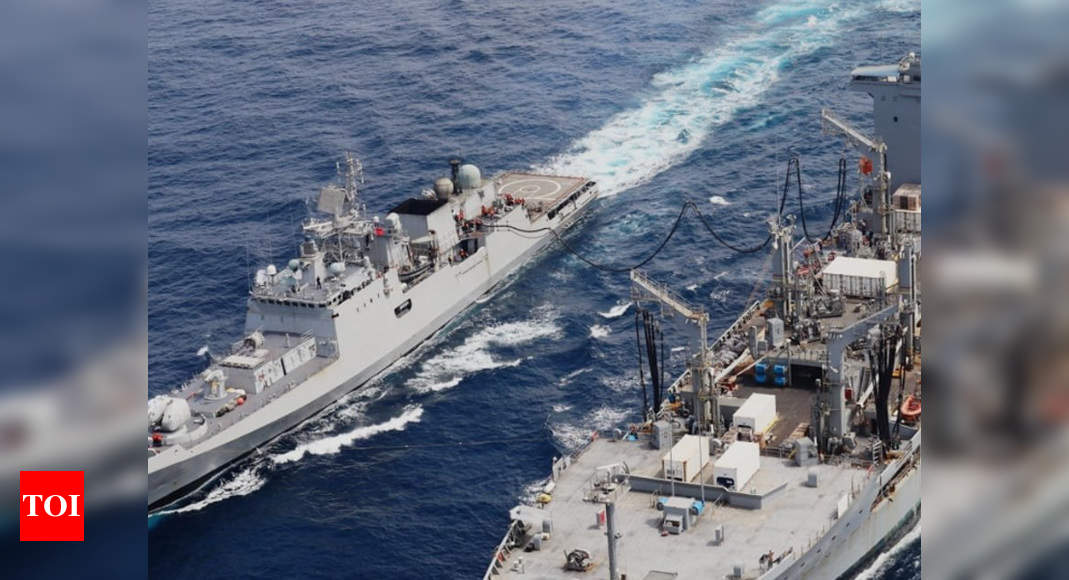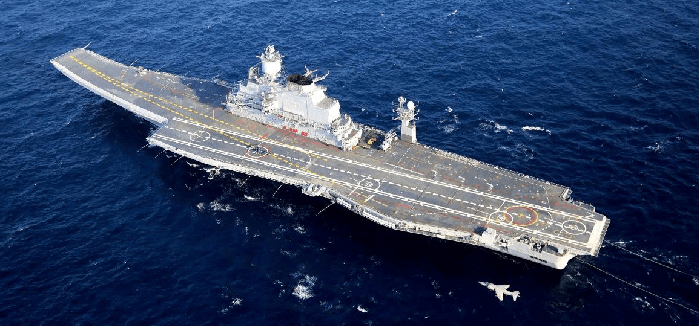India reduces demand for 57 carrier based jets
India is now looking to reduce the number of Multi-Role carrier borne fighters jets it wants to source from foreign manufacturers.
The numbers could be cut down from the present demand of 57 jets. According to some estimates, the Indian Navy could settle for just 36 jets, or two squadrons. A formal projection will be made to the Department of Military Affairs, which was created in the Indian Ministry of Defence in January 2020.
Russian MiG 29K, procured in 2011, is the existing deck based fighter of the Navy on board its carrier, the INS Vikramaditya. At present there are 45 such jets and with the next carrier INS Vikrant set to be operational by 2023, more number of planes are needed.
International players like Boeing with the F/A-18 and Dassault aviation with the Rafale-M are in the race for the tender. In January 2018 the Indian Navy issued a Request for Information seeking to buy 57 deck-based fighters for an estimated cost of about 95000 crores (USD 9.5 Bn). These jets are intended use as day-and-night capable, all-weather, multi-role, deck-based combat aircraft which can be used for air defence, air-to-surface operations, buddy refuelling, reconnaissance, etc, from Indian navy aircraft carriers.
Read the tender here.
Indian news paper The Hindu has reported “the Navy is looking to revise the tender for 57 carrier-based jets downwards” (
read it here).
India reduced foreign planes to promote its own
A reduction in numbers has been made to accommodate the indigenously made twin-engine deck-based fighter (TEDBF) under development by the Defence Research and Development Organization (DRDO) which is likely to ready by 2030 and its first flight targeted for 2026.
The Naval version of the single-engined Light Combat Aircraft (LCA) successfully landed on the deck of INS Vikramaditya in January 2020 .
Read it here . This led the DRDO to outline a plan to develop a twin-engine deck-based fighter using the LCA experience.
The new TEDBF may have technologies which the Advanced Medium Combat Aircraft (AMCA) being made for the Indian Air Force may have.
The Aeronautical Development Agency (ADA), a wing of the DRDO, has been tasked for developing a twin engine made-in-India fighter jet for the carrier operations. The development phase is expected to cost about Rs 8,000 crore ( approx $ 1.3 billion). The decision was taken at the ADA’s Annual General Body meet in May this year which was chaired by Defence Minister Rajnath Singh. This is aimed at being self-reliant or “Atmanirbhar” , as its said in Hindi Language, by cutting down on defence imports.
At least three variations of the design of the TEDBF, are being studied presently using the most modern aidsto arrive at the optimum shape of the fighter which could carry a clutch of air to air missiles. The Ministry of Defence has okayed 248 pieces of the new indigenous missile Astra for the MiG 29K (
read It here)
The status of the 57 jets tender
The Navy is evaluating the responses to the Request For Information (RFI) including crucially compatibility with Indian carriers that use a ski-jump for Short Take-Off but Arrested Recovery (STOBAR) launch operations.
US-based Boeing’s F/A-18 Block III Super Hornet is in the race for 57 deck-based fighters along with Dassault Aviation’s Rafale. Boeing had claimed that it had carried out the necessary tweaks (
read it here) to allow the fighter to take-off using a Ski-Jump. The F/A-18 Block III, was designed to operate from U.S. flattops using a catapult assisted take-off but arrested recovery (CATOBAR) aircraft launch system, which allows for the deployment of far heavier and better armed fighter jets than the STOBAR launch system.
The existing 45 jets, MiG 29K, are enough for just the INS Vikramaditya. The INS Vikrant — the second aircraft carrier – is now expected to join the Navy by 2023 because of the delays caused by the pandemic and hurdles in procurement aviation equipment from Russia. A third carrier is in the drawing board. Officials said the second carrier is inducted there would not have enough fighters to operate from two carriers to maintain required level of deterrence.
Meanwhile China is adding numbers
The decision comes at a time when tensions between India-China is spilling over from the Himalayas into the maritime domain and both sides are preparing to be engaged in a long stare-down competition for supremacy in the Indian-Ocean region and Asia.
The People’s Liberation Army (Navy) has been rapidly ramping up its capabilities especially its carrier fleet. The PLAN is building a third carrier which resembles US super carriers and uses Electromagnetic Aircraft Launch Systems (EMALS) like the USS Ford while its first two carriers use a ski-jump like the Indian carriers which reduces the payload carried by the deck-based fighters.
A US department of Defence report: ‘Military and Security Developments Involving the People’s Republic of China 2019’ says “The new carrier (Shandong) is a modified version of the Liaoning but is similarly limited in its capabilities due to its lack of a catapult launch system and has a smaller flight deck than the deck on U.S. carriers.”
Read it here
China’s next generation of carriers, including one that began construction in 2018, will have greater endurance and a catapult launch system capable of supporting additional fighter jets, launching various types of fixed-wing aircraft, including early warning and antisubmarine warfare (ASW) aircraft and more rapid flight operations.. These improvements would increase the striking power of a potential carrier battle group when deployed to areas beyond China’s immediate periphery.
Read detail IDD perspective on Asian carrier
Japan ordered latest deck based fighters
Japan has moved a step closer to operating an aircraft carrier of its own, ending almost a 70 years self-imposed restraint. The US has okayed the sale of 42 of the F-35B Short Take-Off and Vertical Landing (STOVL) aircraft produced by Lockheed Martin, under a $ 23.11 Billion deal that includes another 63 conventional F35 jets
.Read details here
Last year, in 2019, Japan announced its plans to have fighter jets on its existing ‘flat-decks’, the Izumo class helicopter carriers. The ships are being modified for the same. In the past 12 months, the Indo-Pacific has seen interesting developments on ‘carriers’. Japan and China have literally ‘changed gears’ to accelerate the ‘Asian aircraft carrier race’. India and Korea are the other two Asian countries which are seen part of this ‘race’ and have carriers, or are making one.
Locally made jet, to be ready by 2026, will make up numbers IDD Bureau India is now looking to reduce the number of Multi-Role carrier borne fighters jets it wants to source from foreign manufacturers. The numbers could be cut down from the present demand of 57 jets. According to some estim

www.indiadefencedialogue.com
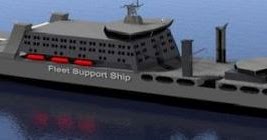
www.indiandefensenews.in







